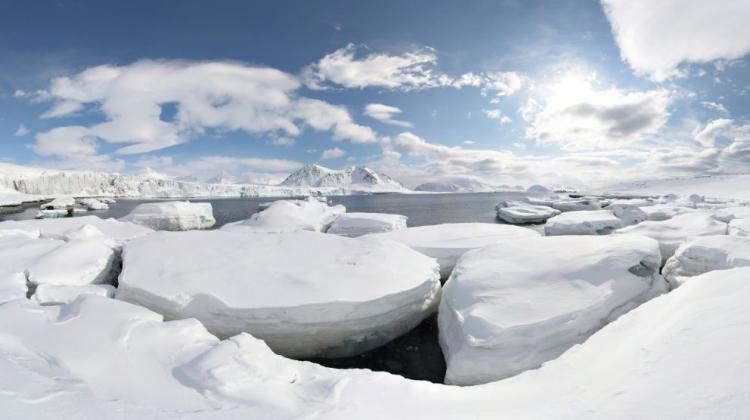Palaeoceanography - studies of fossil DNA

Polish researcher was the first to isolate fossil DNA of foraminifera from the polar regions. Due to the lack of shells, most of the local foraminifera fauna has not been preserved in the fossil record. Only by analysing fossil DNA researchers were able to find these species and recreate their record in previous eras. This has opened completely new possibilities in the study of past climate and environment.
Joanna Pawłowska of the Institute of Oceanology in Sopot specialises in palaeoceanography. She recreates climate and environmental changes on the basis of marine sediments. The research material is collected from the seabed in the Arctic, primarily in Svalbard.
Foraminifera are single-celled organisms very widely used in palaeoceanography due to the very good preservation of their shells in the fossil record. In the polar regions a large proportion of foraminifera are those that did not have shells, so their remains have not survived to our times. What is the relationship between changes in the foraminifera clusters and climate change?
"As the climate changes, so does the environment. Different species of foraminifera begin to dominate. This is primarily based on the environmental tolerance or environmental preferences of specific species. Some prefer colder water, others warmer water, yet another species are indicators of high productivity. In the case of foraminifera with shells, shell chemical composition changed as the environment changed and reflected the chemical composition of the environment at a time when the organism was alive" - explained Pawłowska.
The analysis of such samples allows scientists to draw conclusions about the past. Now they can also draw conclusions based on the analysis of molecular DNA of foraminifera. To collect samples, research team must sail to the Arctic on a ship Oceania. Research equipment is on board. The most important tool in the work of palaeoceanographer is gravity core drill, which is a metal pipe with ballast, which with the force of gravity is driven into the seabed and can sample up to several meters of sediment core, which is later frozen, transported to the research centres and subjected to detailed analysis in laboratories.
"We conduct micropalaeontological analysis, check the properties of the sediments, carry out biochemical analysis and based on these indicators we are able to reproduce the changes that took place in the environment in past epochs, and how the environment changed with the changing climate" - said Pawłowska.
She admitted that such journeys are both an adventure and hard work. The cruise usually takes place once a year for a few weeks. Oceania - the ship of the Institute of Oceanology PAS spends about 3 months a year in the region of Spitsbergen, from June to August. Rotating teams of scientists collect material for research. During the tedious and hard work in difficult climatic conditions they have the opportunity to admire the Arctic, which is an interesting, attractive place to conduct research.
"Molecular methods in palaeoceanography are only now being introduced , it requires experimentation. I would like to expand molecular tests to other groups of organisms, such as diatoms. They are single-celled algae, which are used in palaeoceanography to reconstruct environmental conditions - just as foraminifera" - said Pawłowska.
The amounts of diatoms in the sediments collected in the fjords of Spitsbergen are very small. It may be surprising, because in the open sea the diatom fossil record is very good. Although diatomaceous blooms occur every year there, which means that they are present in the environment, they do not remain in the sediment over a longer time.
"We do not really know why diatoms are not preserved in the fjord sediments, but I was able to obtain their DNA in the first collected samples. So it is possible that, as in the case of foraminifera, we will also be able to recreate the DNA sequences of other groups of organisms. In the future, I would like to do research in this direction" - plans Pawłowska.
The researcher permanently collaborates with the University of Geneva, where she performed the necessary research. Recently she established a collaboration with the institute IFREMER. International contacts allow her to conduct research in a wider range than if she did it on her own. Joanna Pawłowska is this year\'s winner of the START scholarship of the Foundation for Polish Science.
PAP - Science and Scholarship in Poland, Karolina Duszczyk
kol/ agt/
tr. RL
Przed dodaniem komentarza prosimy o zapoznanie z Regulaminem forum serwisu Nauka w Polsce.















